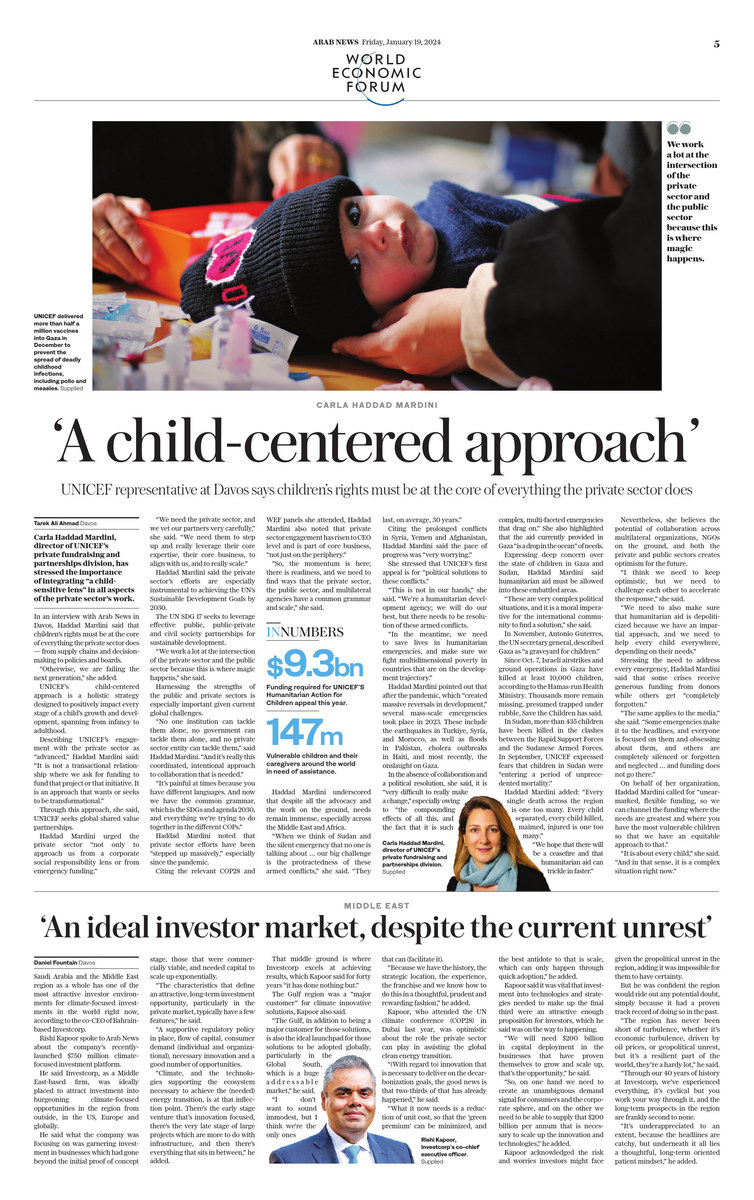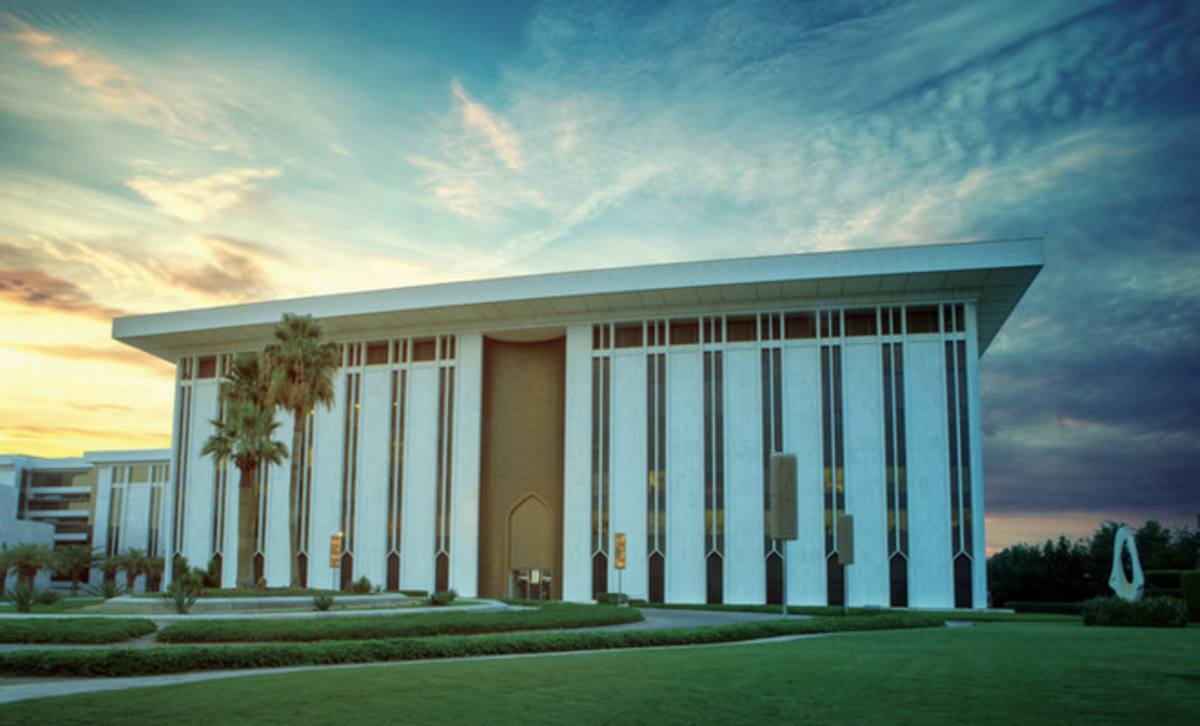DAVOS: Saudi Arabia and the Middle East region as a whole has one of the most attractive investor environments for climate-focused investments in the world right now, according to the co-CEO of Bahrain-based Investcorp.
Rishi Kapoor spoke to Arab News at the World Economic Forum in Davos about the company’s recently-launched $750 million climate-focused investment platform.
He said Investcorp, as a Middle East-based firm, was ideally placed to attract investment into burgeoning climate-focused opportunities in the region from outside, in the US, Europe and globally.
He said what the company was focusing on was garnering investment in businesses which had gone beyond the initial proof of concept stage, those that were commercially viable, and needed capital to scale up exponentially.
“The characteristics that define an attractive, long-term investment opportunity, particularly in the private market, typically have a few features,” he said.
“A supportive regulatory policy in place, flow of capital, consumer demand (individual and organizational), necessary innovation and a good number of opportunities.
“Climate, and the technologies supporting the ecosystem necessary to achieve the (needed) energy transition, is at that inflection point. There’s the early stage venture that’s innovation focused, there’s the very late stage of large projects which are more to do with infrastructure, and then there’s everything that sits in between,” he added.
That middle ground is where Investcorp excels at achieving results, which Kapoor said for forty years “it has done nothing but.”
The Gulf region was a “major customer” for climate innovative solutions, Kapoor also said.
“The Gulf, in addition to being a major customer for those solutions, is also the ideal launchpad for those solutions to be adopted globally, particularly in the Global South, which is a huge addressable market,” he said.
“I don’t want to sound immodest, but I think we’re the only ones that can (facilitate it).
“Because we have the history, the strategic location, the experience, the franchise and we know how to do this in a thoughtful, prudent and rewarding fashion,” he added.
Kapoor, who attended the UN climate conference (COP28) in Dubai last year, was optimistic about the role the private sector can play in assisting the global clean energy transition.
“(With regard to) innovation that is necessary to deliver on the decarbonization goals, the good news is that two-thirds of that has already happened,” he said.
“What it now needs is a reduction of unit cost, so that the ‘green premium’ can be minimized, and the best antidote to that is scale, which can only happen through quick adoption,” he added.
Kapoor said it was vital that investment into technologies and strategies needed to make up the final third were an attractive enough proposition for investors, which he said was on the way to happening.
“We will need $200 billion in capital deployment in the businesses that have proven themselves to grow and scale up, that's the opportunity," he said.
"So, on one hand we need to create an unambigious demand signal for consumers and the coporate sphere, and on the other we need to be able to supply that $200 billion per annum that is necessary to scale up the innovation and technologies," he added.
Kapoor acknowledged the risk and worries investors might face given the geopolitical unrest in the region, adding it was impossible for them to have certainty.
But he was confident the region would ride out any potential doubt, simply because it had a proven track record of doing so in the past.
"The region has never been short of turbulence, whether it's economic turbulence, driven by oil prices, or geopolitical unrest, but it's a resilient part of the world, they're a hardy lot," he said.
"Through our 40 years of history at Investcorp, we've experienced everything, it's cyclical but you work your way through it, and the long-term prospects in the region is frankly second to none.
"It's underappreciated to an extent, because the headlines are catchy, but underneath it all lies a thoughtful, long-term oriented patient mindset," he added.
































